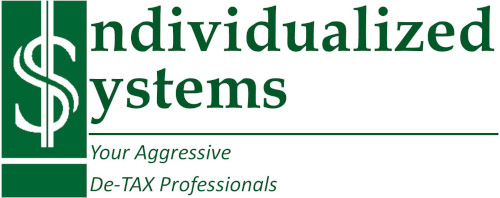Home Office Deductions
Home office deductions are becoming harder and harder, but they can still increase your overall cash-in-pocket by lowering your overall taxes as long as you follow the rules.
The IRS’s Stand
The safest way to get all your home office deductions is to do what the IRS wants and that is to meet all the following criteria:
- The home office must be your PRIMARY PLACE OF BUSINESS.
It must be the place where the most important tasks of your business are performed. - You must REGULARLY SEE CLIENTS at the home office.
Regularly is interpreted as “Ordinarily” and “Mostly” by the IRS. - You must CLOSE THE TRANSACTIONS at the home office.
In other words, you must get paid at your home office. - You must SPEND OVER 1/2 OF YOUR WORK TIME at the home office. Usually, you must spend at least 30 hours of your work time at the home office.
- The area claimed must be used EXCLUSIVELY FOR BUSINESS. You can’t use the kitchen or the TV room
All these criteria must be met even if the home office is your only office. If you meet clients elsewhere and are paid other than at your home office, the chances are the deduction will be denied.
However, the tax courts have been very supportive of deductions for home office when no other location is provable even if the “primary place of business” as defined by IRS is your car or truck.
For example:
A trucker was allowed a deduction for home office in spite of the fact that his ‘primary place of business’ was his truck and he met most clients and closed the deals in their offices, not his. It was decided that the vehicle was not conducive to meeting, record-keeping and other ‘office’ duties of any business.
Safe Haven or Simplified Method
As a result of the courts, the IRS has instituted a ‘simplified method’ of taking the home office deduction which allows you $5 per square foot deduction for the designated office area. This method requires no actual documentation on your part other than to set aside an area that is used ‘exclusively for business’.
That term “exclusively” does not include ‘incidental use’ such as walking through the ‘office’ to get to other areas of the home and the area could be as small as a folding table and chair as long as you have designated it as your office work area (some have even successfully used duct tape on the floor or a small folding screen to designate the office area in a larger room of the home)
Allowed Home Office Costs
- Depreciation of Assets
- The portion of your home that is designated as the office
- All repairs and improvement on that portion
- All furniture and equipment and other assets related to the home office
NOTE:
If Home office deduction is not allowed, you may still depreciate the furniture and equipment up to the percentage of time you work in the home office compared to all other work.
- Expenses of Home office (providing the deduction is allowed):
- 100% of separate business phone line – Business percentage only if shared phone line plus 100% of business long distance (this does not apply if there is only one phone line to the home)
- Business percentage of mortgage interest and/or apartment rent
- Business percentage of structure and contents insurance
- Business percentage of property taxes on structure
- 100% of personal property taxes on business assets
Determining Business Percentage
There are three ways to determine the business percentage of the home:
- Number of Rooms: number of rooms the office occupies / total rooms in home
- Total Square Footage: square footage of office / total square footage of home
- Net Square Footage: square footage of office / net square footage of home*
*total square footage – square footage of common areas
Of course the IRS wants you to use the square footage of the office divided by the total square footage of the home because it usually yields the smallest deduction. You and your preparer, should use whichever method yields the greater percentage of the home.
Avoid Taxable Income When You Sell a Home Office
- Convert the office to personal use on December 31 the year before the sale to take advantage of the tax-deferred gain rollover on the sale and repurchase of a personal residence.
- Convert the office to personal use 3 years and one day before the sale of the home after age 55 in order to take the one time exclusion of up to $125,000 of taxable profit on the sale of a personal residence.
Audit Proof the Home Office Deduction
- Photograph the office and its contents at various times throughout its use and have it processed by a photo-finisher that dates the photos on the back.
- Keep blueprints/surveys of your home to prove the amount of space occupied by the home office and indicating the relative square footage.
- Prominently display your home office address and phone number on business cards and advertising.
- Have guests sign a guest log when they visit your home office.
- Keep a time and work activity log.
- Retain all receipts and paid invoices as support for cancelled checks.
Limitations and Carryforwards
The home office deduction is limited to the net income from the activity. However, any excess that is disallowed can be carried forward to subsequent years to offset those expenses.

